Gree Electric (Luoyang) steel structure project covers an area of 70,000 square meters and uses 6,500 tons of steel.
1. Raw Material Storage and Management
Steel Sheets, Plates, Beams, and Bars: These are the primary raw materials used in steel structure manufacturing. They are typically sourced from steel mills.
Storage: Materials are stored in warehouses or yards in an organized manner, often categorized by size, shape, and type.
Inventory Control: To ensure the correct materials are available when needed, the plant will implement an efficient inventory management system, sometimes using barcodes or RFID tags.
2. Design & Engineering
Structural Design: In-house or external structural engineers design the steel framework, considering load-bearing requirements, safety standards, and environmental conditions.
BIM (Building Information Modeling): Many steel structure plants use BIM for designing and planning. It helps visualize the project, optimize material usage, and identify potential issues in the design phase.
Computer-Aided Design (CAD): CAD software is used to create detailed blueprints for each component in the structure, such as beams, columns, and joints.
3. Cutting and Shaping
Sawing: Steel plates or beams are cut into specific lengths using industrial saws.
Plasma Cutting: Plasma cutting is commonly used for cutting through thicker steel plates or for creating intricate shapes.
Laser Cutting: High-precision laser cutting may be used to create accurate shapes or holes in the steel, offering high levels of accuracy.
Bending and Rolling: For curved steel beams or structural elements, steel can be bent or rolled into shape. This is common in architectural features such as arches or domes.
4. Welding
Pre-Welding Preparation: The surfaces to be welded are prepared by cleaning and grinding to ensure good adhesion.
Welding Processes:
MIG (Metal Inert Gas) Welding: Used for general fabrication and is suitable for thin to medium thicknesses.
TIG (Tungsten Inert Gas) Welding: Used for highly accurate and clean welds, often for finer components.
Arc Welding: Common in heavier-duty sections or for thicker materials.
Weld Inspection: Nondestructive testing (NDT) methods like ultrasonic testing or X-ray inspection are used to check the integrity of the welds.
Robotic Welding: Some modern plants use robotic welding for high-speed, consistent weld quality, especially for repetitive tasks.
5. Drilling and Punching
Hole Drilling: Components are drilled to create holes for bolting or for reinforcing connections.
Punching: Larger steel pieces often require punched holes for rivets or bolts. High-powered punch presses are used to achieve this.
6. Surface Treatment
Shot Blasting: Steel surfaces are cleaned by shot blasting to remove rust, mill scale, and dirt before coating.
Galvanization: Steel components may be galvanized by dipping them in molten zinc to prevent corrosion, especially for structures exposed to harsh weather conditions.
Painting: Steel is coated with protective paint to further enhance its resistance to corrosion, improve its aesthetic appeal, and match required color schemes.
Powder Coating: In some cases, a powdered paint is applied and then cured with heat for a durable and smooth finish.
7. Assembly
Sub-Assemblies: Large steel structures are typically pre-assembled in sections to ensure accuracy before being shipped to the construction site.
Jigging: Jigs are used to ensure that the steel pieces are placed in the correct alignment during assembly. These fixtures help ensure the accuracy of the
components before welding or bolting.
Bolt Connection: Often, the steel structures are joined using bolts instead of welding for easier disassembly or to meet specific design requirements.
8. Quality Control
Dimensional Inspection: After each stage of fabrication, the steel components are checked for precise measurements and tolerances.
Strength Testing: Some plants perform strength tests to ensure the structural components can withstand the anticipated loads.
Non-Destructive Testing (NDT): NDT methods, like ultrasonic testing or magnetic particle inspection, are used to check the integrity of welds, joints, and other critical areas.
Certification: Steel structure plants often need certifications like ISO 9001 for quality management and CE marking (in Europe) to meet international standards.
9. Packaging and Shipping
Pre-Assembly Check: Once the components are fabricated and inspected, they are pre-assembled to check fit and alignment.
Packaging: Fabricated components are packed for shipment to avoid damage during transport. This can include securing them with bands, shrink-wrapping, or loading into protective crates or containers.
Shipping: Finished steel structures are transported to the construction site via trucks, rail, or even ships, depending on the distance and size of the components.
10. Erection and Installation
Once the steel components reach the construction site, they are erected using cranes and specialized equipment.
The assembly of the steel structure typically involves bolting or welding the components together, with ongoing inspections to ensure the structure’s integrity.
11. Technology Integration
Automation: Many steel structure plants now incorporate automated processes like CNC machines, robotic welding, and automated material handling systems to increase efficiency and reduce human error.
Software Tools: Many modern plants use advanced software for design, production management, and supply chain tracking. This helps in improving production timelines and reducing waste.
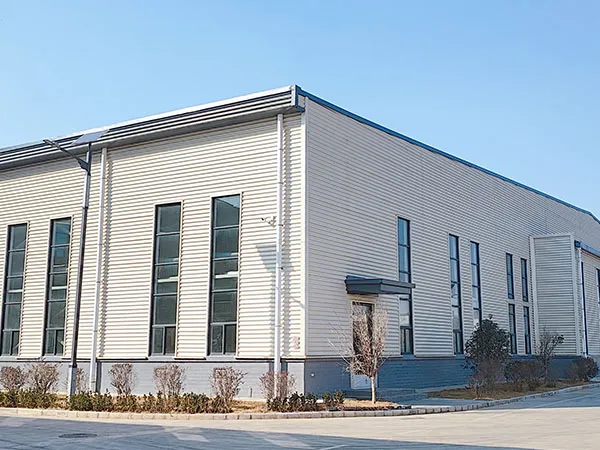
Steel Structure Workshop
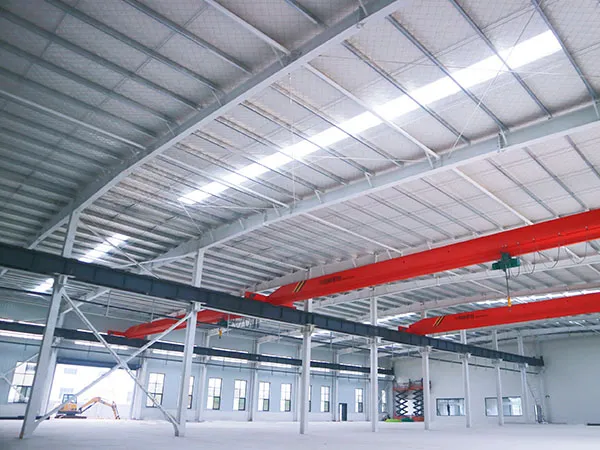
Steel Structure Factory
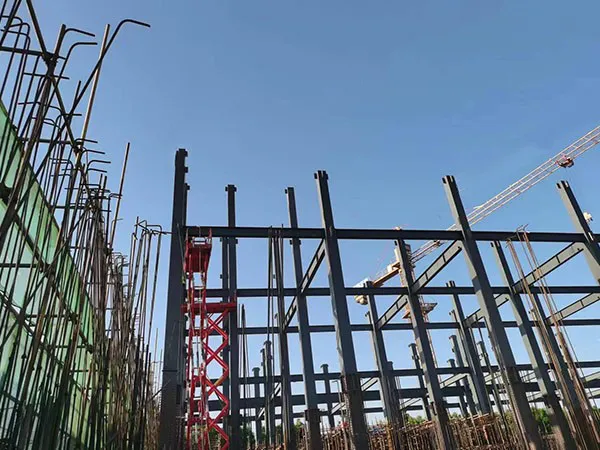
Steel Structure Cold Storage
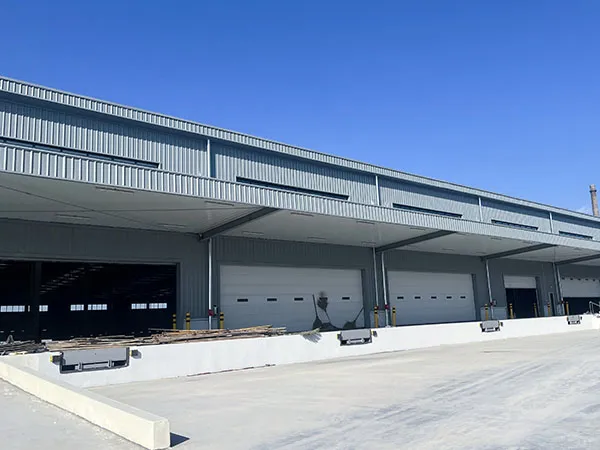
Logistics Park B04 Warehouse Steel Structure Project
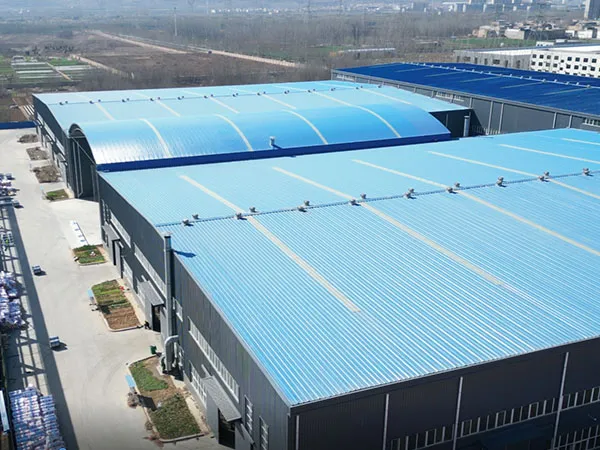
Fuchong Intelligent Glass Tempering Equipment Project
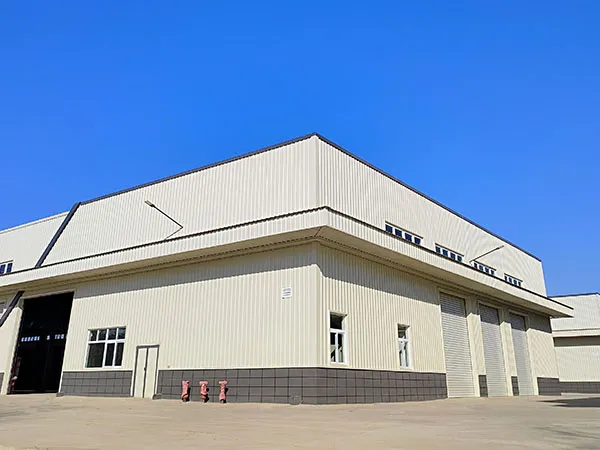
Henan Jiyuan South Passenger Transport Station Steel Structure Engineering Design Project
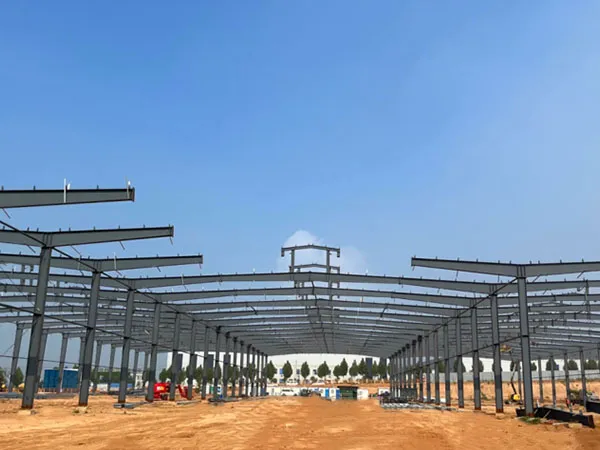
Luoyang Shangke Electrical Technology Co., Ltd. Project
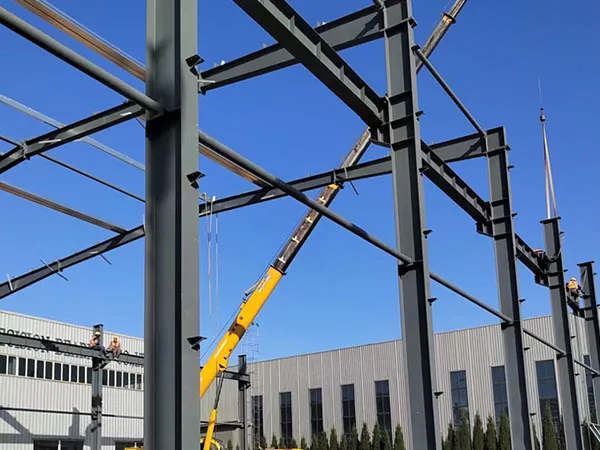
Luoyang Zhongyue Precision Bearing Co., Ltd. Steel Structure Plant Project